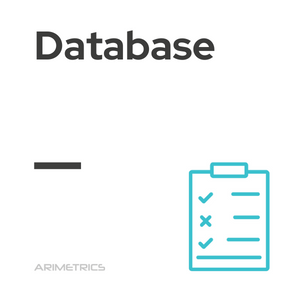
Definition:
A database is an organized collection of information that is stored electronically for easy access, management and updating. Databases enable organizations to store and retrieve information efficiently. They are managed by database management systems (DBMS), which are essential for data analysis. In essence, a database organizes information into fields (a piece of information), records (a set of fields) and files (a collection of records). A simple example would be a telephone directory, which contains records with fields such as name, address and telephone number (NAP).
What databases are for
Databases are essential tools for information management in the digital and business world. They provide an organized structure that facilitates data storage, management and analysis, bringing multiple benefits to organizations. Here are some of their main functions:
- Information storage: They allow storing large volumes of data in a structured manner, facilitating information access and management.
- Data management: They facilitate the organization, updating and deletion of data, ensuring that information is always up to date and accessible.
- Fast retrieval: They provide mechanisms for fast and efficient queries, allowing users to extract specific information easily.
- Data analysis: They assist in the analysis of trends and patterns through data analysis tools, crucial for informed business decision making.
- Information security: They offer robust security features to protect sensitive data, including access control and encryption.
- Application integration: Enable integration with multiple applications and systems, facilitating the flow of information between different platforms.
- Transaction support: Manage data transactions securely, ensuring the integrity and consistency of information, especially in financial and e-commerce applications.
- Scalability: Designed to grow with the needs of an organization, they can handle an increase in the volume of data and users without compromising performance.
- Automation of processes: They allow the automation of routine tasks, such as report generation and record keeping, freeing up time and resources for more strategic activities.
Classification of databases
Databases can be classified as follows:
According to the variability of the data
- Statistics: They store historical data for trend analysis and projections. They are mainly read-only.
- Dynamic: Allows updating, deleting and editing of data in real time.
According to content
- Bibliographic: Contains references and summaries of documents.
- Full text: Include the full text of documents for detailed searches.
- Directories: Organize lists of data, such as telephone directories or web directories.
- Chemical or biological: Specialized in scientific data, such as genetic sequences.
According to data structure
- Relational: They use tables to store data and their relationships. Examples include MySQL, PostgreSQL and Oracle Database.
- NoSQL: Handle unstructured or semi-structured data. Subtypes include documents (MongoDB), key-value (Redis), graphs (Neo4j) and columns (Apache Cassandra).
According to access and distribution
- Local: Installed on a single server or computer, accessible only from that machine.
- Distributed: Data is spread across multiple physical locations, but managed as a single logical unit.
According to purpose
- OLTP (Online Transaction Processing): Optimized to handle a large number of short and fast transactions.
- OLAP (Online Analytical Processing): Designed for complex queries and multidimensional analysis of large volumes of data.
Depending on the license model
- Open source: The source code is available for anyone to use, modify and distribute. Examples include MySQL, PostgreSQL and MariaDB.
- Proprietary: Developed by companies that control the source code and require a license for its use. Examples include Microsoft SQL Server and Oracle Database.
Most widely used database technologies
In the world of data management, several technologies stand out for their ability to handle information efficiently and securely. These tools are essential for the operation of business applications and web services. Below are some of the most popular technologies used to manage databases:
- MySQL: An open source relational database management system. Widely used in web and enterprise applications. Known for its speed, reliability and ease of use. Supports a wide range of applications, from small to large.
- PostgreSQL: An advanced, open source relational database management system. Noted for its ability to handle complex operations and its compliance with SQL standards. Offers extensibility and support for ACID transactions.
- Oracle Database: A proprietary relational database management system. Known for its robustness, scalability and advanced security features. Extensive support for large-scale enterprise applications.
- Microsoft SQL Server: A relational database management system developed by Microsoft. It integrates analysis and reporting tools. It provides a secure and scalable environment for enterprise applications.
- MongoDB: A document-oriented NoSQL database. Ideal for handling large volumes of unstructured or semi-structured data. It offers flexibility and horizontal scalability.
- Redis: An in-memory key-value database. Known for its speed and ability to handle real-time operations. Used for caching, message queuing and user sessions.
- Cassandra: A distributed NoSQL database designed to handle large volumes of data on multiple nodes. It offers high availability and horizontal scalability. Ideal for applications that require fast processing of distributed data.
- Elasticsearch: A full-text search and analysis engine. Used for complex searches and real-time analysis. Commonly used in applications requiring advanced search and data filtering.
